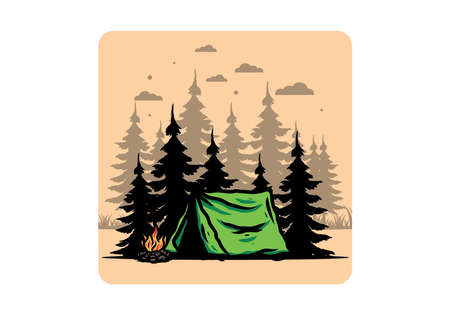Understanding Your Crews Needs
Before you dive into selecting the perfect camp cook system, it’s essential to start by assessing your group’s unique needs. Whether you’re heading out with a troop of Scouts, a big family reunion, or a group of friends, every crew is different. Begin by counting heads—knowing exactly how many people you’re cooking for will help you determine both the size and type of cooking equipment required. Next, talk through dietary preferences and restrictions. Is anyone vegetarian, vegan, gluten-free, or allergic to certain foods? Creating an inclusive meal plan not only keeps everyone safe but also ensures no one feels left out during shared meals around the campfire. Finally, consider any special requirements like young kids who need simpler food or adults who crave gourmet coffee in the morning. Taking the time to assess your crew’s size and needs up front will set you up for success and make your camp cooking experience enjoyable for everyone.
2. Key Features to Look for in Camp Cook Systems
When youre cooking for a crowd at the campsite, choosing the right camp cook system can make all the difference. To keep your crew well-fed and happy, youll want a setup that checks all the boxes—capacity, durability, fuel options, and portability are essential. Here’s what you need to know before you buy:
Capacity: Feeding a Hungry Crew
If you’re feeding a large group, size matters. Look for cook systems with multiple burners or larger griddles that allow you to prepare several dishes at once. Consider stove output (measured in BTUs) and pot/pan compatibility to ensure you can cook efficiently for everyone.
| System Type | Burners | Ideal Group Size |
|---|---|---|
| Single Burner Stove | 1 | Up to 4 people |
| Double Burner Stove | 2 | 5–8 people |
| Large Camp Griddle/Propane Grill | 2–4 | 8+ people |
Durability: Built to Last Outdoors
Campsite conditions can be rough on gear, so opt for systems made from sturdy materials like stainless steel or cast iron. Check for solid construction, stable legs, wind protection, and quality control knobs. A reliable camp cook system will withstand bumps, scrapes, and weather changes.
Fuel Options: Versatility is Key
The best camp cook systems offer flexible fuel choices—propane is popular for its convenience and widespread availability in the U.S., but some systems also support butane or multi-fuel options. Think about what’s most accessible where you camp and whether you’ll need backup fuel sources.
Common Fuel Types:
- Propane: Easy to find, safe to transport, works well in most weather.
- Butane: Lightweight, ideal for mild climates.
- Duel-Fuel: Adaptable for international travel or emergency use.
Portability: Easy Transport and Setup
Catering to a large group often means hauling extra gear, so your cook system should be easy to pack up and move. Look for folding legs, carrying handles, manageable weight, and compact designs that fit neatly into your vehicle alongside coolers and bins.
Key Takeaways:
- Bigger groups require larger capacity stoves or griddles.
- Choose durable materials built for outdoor use.
- Select fuel options based on trip length and location.
- Prioritize portability for hassle-free group camping.
The right features make camp cooking easier—and way more enjoyable—for everyone around the fire!
![]()
3. Top Camp Cook Systems for Feeding a Crowd
When it comes to feeding a group outdoors, having the right camp cook system can make or break your trip. Here’s a curated list of the best options on the market, each catering to different group sizes and cooking preferences.
For Large Groups (10+ People)
If you’re cooking for a big crew, efficiency and capacity are key. The Camp Chef Explorer 2-Burner Stove is a staple for many group leaders thanks to its robust construction, two powerful burners, and compatibility with large pots and griddles. Another favorite is the GSI Outdoors Pinnacle Propane Stove, which offers wind resistance and excellent simmer control—perfect for everything from pancakes to chili night.
For Medium Groups (6-10 People)
The Coleman Classic Propane Stove remains a crowd-pleaser for medium-sized groups. It’s affordable, reliable, and fits standard camping cookware. For more versatility, the Eureka Ignite Plus Stove features two spacious burners and precise flame control, making it easy to whip up multi-course meals at your base camp.
For Small Crews (4-6 People)
When the group size is a bit smaller but still hungry, the Jetboil Genesis Basecamp System shines. Its compact design packs down small but expands to offer dual burners that can handle anything from morning coffee to evening stir-fry. Alternatively, the MSR WindBurner Stove Combo System is ideal for quick setup and fuel efficiency while still providing enough capacity to cook family-sized portions.
Bonus: All-in-One Cooking Kits
If simplicity is your goal, consider all-in-one kits like the BioLite CampStove Complete Cook Kit. This innovative system uses wood fuel, charges devices, and includes cookware—making it perfect for eco-conscious groups who want everything in one package.
Choosing Your Perfect System
The right cook system depends on your group’s size, meal plans, and style—whether you love grilling steaks or keeping it simple with one-pot wonders. Prioritize durability, ease of use, and packability to keep everyone fed and happy around the campfire.
4. Camp Cooking Tips and Tricks
Group camp cooking can be a blast, but it also takes some serious organization to keep everyone fed and happy. Here are some tried-and-true tips and tricks to ensure your group meals go off without a hitch, from prep to cleanup.
Pro Tips for Meal Prep
- Plan Ahead: Make a detailed meal plan and shopping list before heading out. Assign meal responsibilities to different crew members if possible.
- Pre-Chop and Pre-Mix: Prepare as much as you can at home—chop veggies, marinate proteins, or pre-mix spices in labeled bags for each meal.
- Pack Smart: Store ingredients in stackable containers or resealable bags to maximize cooler space and keep food fresh longer.
Timing is Everything
- Stagger Start Times: With large crews, start cooking earlier than usual. Assign someone to monitor the fire or stove while others prep ingredients.
- Use Multiple Burners: Invest in a multi-burner camp stove so you can cook multiple dishes simultaneously—main course on one burner, sides on another.
- Keep It Simple: Choose recipes with overlapping ingredients or similar cooking times to streamline the process.
Sample Group Cooking Timeline
| Task | Person Responsible | Time Needed |
|---|---|---|
| Start the fire/stove | Crew Leader | 10 min before cooking |
| Chop veggies & prep proteins | Sous Chef(s) | 15-20 min |
| Cook main dish | Main Cook | 30-40 min |
| Prepare sides/salads | Sous Chef(s) | 20 min (overlap with main dish) |
| Dessert/coffee setup | Dessert Lead | 10 min before meal ends |
| Cleanup duty rotation | Crew (rotating) | 15-20 min after meal |
Smooth Cleanup Strategies
- Create a Cleanup Station: Set up buckets for wash, rinse, and sanitize. Use biodegradable soap and bring extra sponges.
- Ditch Disposable Everything: Encourage everyone to use reusable plates and utensils. Label them with names to avoid mix-ups.
- Assign Roles: Rotate cleanup duties so no one feels stuck doing dishes every night.
- Packs Out Trash: Always pack out what you pack in. Designate trash and recycling bins at camp for easy sorting.
The Bottom Line: Teamwork Makes the Dream Work!
The key to smooth group cooking is clear communication and shared responsibilities. With good planning, timed prep, and streamlined cleanup, your crew will spend less time stressing over meals and more time enjoying the wild together.
5. Safety and Environmental Considerations
Guidelines for Safe Cooking in the Outdoors
When preparing meals for a large group outdoors, safety should always come first. Make sure your camp kitchen is set up on stable, flat ground away from tents and other flammable materials. Always keep a fire extinguisher or bucket of water within reach, and never leave stoves or campfires unattended. Use long-handled utensils to prevent burns, and remind your crew to be mindful of hot surfaces, especially when kids are around. It’s also a good idea to have a designated cooking area marked off to avoid accidental contact with flames or hot equipment.
Fire Management: Preventing Wildfires and Accidents
Managing fire responsibly is key when cooking for a crowd in the wild. Use established fire rings if available, or bring a portable stove that keeps flames contained. Only use dead and downed wood if you must build a fire, and never cut live trees or branches. When you’re finished cooking, douse all embers thoroughly with water—never leave until everything is cool to the touch. Always check local fire regulations before your trip; in many parts of the U.S., burn bans may be in effect during dry spells.
Leave No Trace Principles for Group Cooking
Cooking for a group can generate a lot of waste, but following Leave No Trace principles helps minimize your impact. Pack out everything you pack in—including food scraps and packaging—to keep nature pristine for others. Opt for reusable dishes and utensils whenever possible, and use biodegradable soap at least 200 feet from lakes or streams when cleaning up. Scrape leftover food into trash bags instead of dumping it on the ground, as even small crumbs can attract wildlife and disrupt local ecosystems.
Pro Tips for Responsible Outdoor Meals
- Plan meals that create minimal waste and require simple cleanup.
- Keep group members informed about fire safety procedures before starting any cooking activity.
- If using charcoal, pack out used coals in a metal container rather than burying them.
Conclusion
By prioritizing safety and environmental responsibility while cooking for large groups in the outdoors, you’ll help protect both your crew and the natural spaces you enjoy. Adopting these guidelines ensures everyone has a safe, enjoyable experience—and leaves the campsite just as beautiful as you found it.
6. Essential Accessories and Gear
When you’re responsible for feeding a hungry crew in the great outdoors, having the right accessories can make or break your group cooking experience. Even the best camp cook system needs backup from smartly chosen kitchen gear. Here are our top recommendations for must-have accessories, utensils, and storage solutions to keep everything running smoothly at camp.
Must-Have Kitchen Accessories
Start with a sturdy camp table or dedicated cooking surface—this keeps your workspace organized and food prep off the ground. Next, don’t forget about collapsible sinks or wash basins for easy clean-up. A set of stackable mixing bowls, measuring cups, and a durable cutting board will streamline meal prep for big groups. Finally, invest in a high-quality camp knife or chef’s knife with a protective sheath; it’ll save you frustration when dicing veggies or slicing meat for a crowd.
Utensils That Make Life Easier
Cooking for groups means you’ll need more than just a spatula and spoon. Look for long-handled tongs, slotted spoons, ladles, and heat-resistant silicone spatulas. For grilling nights, pack a grill brush and meat thermometer to ensure everyone’s burgers are perfectly cooked. Don’t overlook serving utensils like large spoons or scoops—these help dish out hearty servings without making a mess. A couple of lightweight dish towels and pot holders round out your setup for both safety and convenience.
Food Storage Solutions
Efficient storage is key when you’re organizing meals for multiple people. Bring along stackable food containers with secure lids to keep leftovers fresh and critters away. Heavy-duty zip bags work great for marinating meats or storing pre-chopped ingredients. Consider color-coding your containers to separate proteins, veggies, and snacks—this makes it easier to grab what you need during busy mealtimes. For perishables, an insulated cooler with extra ice packs is essential; some campers even recommend bringing two: one for drinks and another dedicated to food.
Extra Tips for Group Cooking Success
Finally, don’t forget trash bags (and maybe even a small folding trash bin) to keep your campsite tidy. Wet wipes or biodegradable soap will make hand-washing quick and eco-friendly. And remember: always pack out what you pack in to leave your campsite as beautiful as you found it!
With these essential accessories and gear recommendations, your next group camping cookout will be smoother—and tastier—than ever before.


